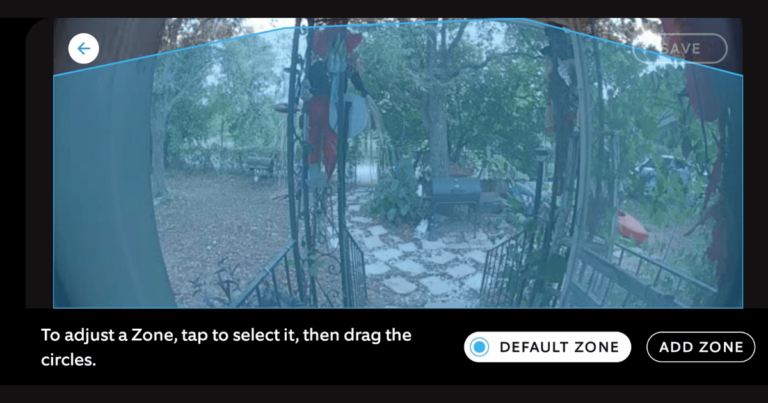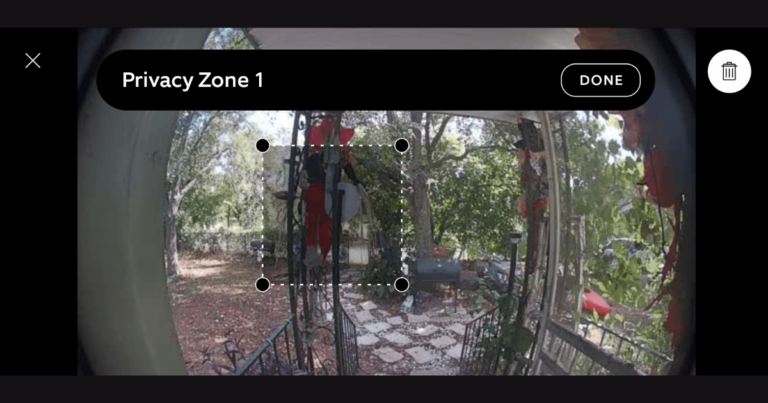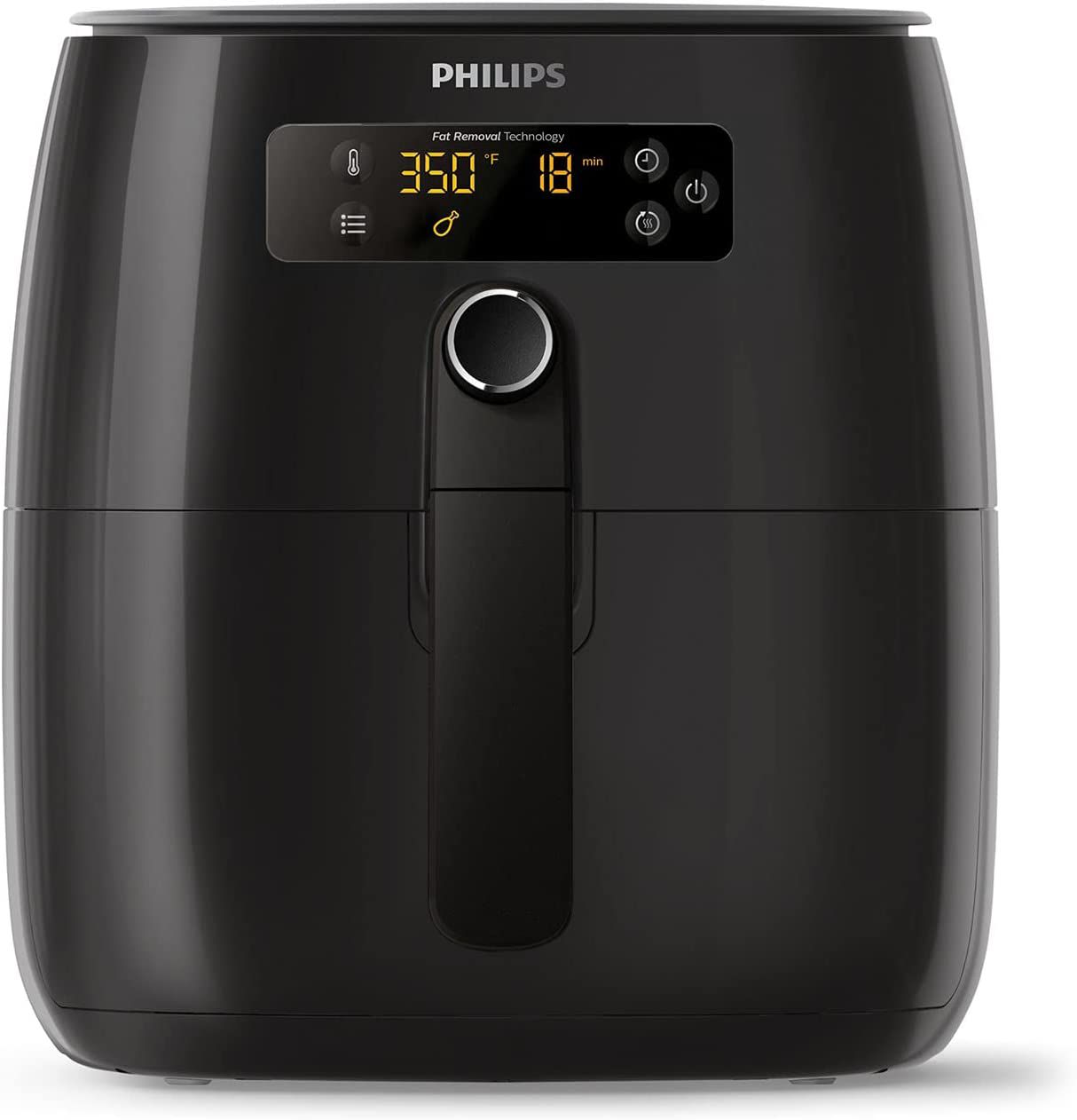Doorbell cameras have revolutionized home security, offering a new level of convenience and peace of mind. But have you ever wondered how do doorbell cameras work? These small yet powerful devices have become an integral part of modern homes, providing surveillance and monitoring capabilities like never before. From capturing clear high-definition video day and night, to seamlessly integrating with smart home systems, doorbell cameras have come a long way. With advanced features like facial recognition and package detection, they enhance security in ways we couldn’t have imagined. So, let’s dive into the fascinating world of doorbell cameras and discover the science behind their functioning.
–
History of Doorbell Cameras: From Analog to Smart Technology
The history of doorbell cameras is quite fascinating. It all started with the humble analog doorbell, a simple button that you press to notify someone of your presence at the door. But as technology advanced, so did our doorbell systems. We moved away from analog to explore the world of smart technology.
In the early 2010s, the concept of a doorbell camera that could connect to the internet was introduced. This groundbreaking innovation allowed homeowners to see and communicate with visitors remotely, even when they weren’t physically present at home. They could monitor their doorstep from anywhere using their smartphones or tablets. This was a game-changer in terms of home security and convenience.
Over time, doorbell cameras evolved further. With advancements in camera quality, connectivity, and smart home integration, these devices became even more powerful. They could now capture HD video, provide two-way audio communication, and even have night vision capabilities. This marked the era of truly intelligent doorbell cameras, capable of enhancing home security and providing peace of mind to homeowners.
-[amazon bestseller=”Doorbell Cameras” items=”10″]
Understanding the Components: Anatomy of a Doorbell Camera System
To truly understand how doorbell cameras work, it’s important to know the different components that make up their system. Let’s break it down.
1. Camera: At the heart of a doorbell camera system is, of course, the camera itself. It is usually located on the front panel of the device and captures the video footage of your doorstep. The quality of the camera can vary, but most modern doorbell cameras offer high-definition resolution and wide-angle lenses to capture a clear view of your surroundings.
2. Microphone and Speaker: Doorbell cameras also feature a built-in microphone and speaker. This allows you to have two-way audio communication with whoever is at your door. Whether it’s a delivery person, a friend, or even an unexpected visitor, you can speak to them directly through the doorbell camera using your smartphone or other connected devices.
3. Wi-Fi Connectivity: To connect your doorbell camera to the internet and enable remote access, it needs to connect to your home’s Wi-Fi network. This allows you to receive real-time notifications and access the camera’s video feed from anywhere.
4. Mobile App: Most doorbell cameras come with a dedicated mobile app that you can install on your smartphone or tablet. This app acts as a control center, allowing you to configure settings, view live video feeds, review recorded footage, and receive motion detection alerts.
5. Power Source: Doorbell cameras can either be wired or battery-powered. Wired doorbell cameras draw power from your home’s existing doorbell wiring, while battery-powered ones rely on rechargeable batteries. The power source ensures that the camera remains operational 24/7.
–
Wired vs. Wireless Doorbell Cameras: Pros and Cons
When it comes to doorbell cameras, you have the choice between wired and wireless options. Let’s explore the pros and cons of each.
Wired Doorbell Cameras:
Pros:
– Reliable power source: Wired doorbell cameras are directly connected to your home’s electrical system, ensuring a constant power supply.
– No battery replacements: Since they don’t rely on batteries, you don’t need to worry about recharging or replacing them.
– Continuous recording: Some wired doorbell cameras offer continuous video recording, providing a comprehensive record of activity at your doorstep.
Cons:
– Installation complexity: Wired doorbell cameras require professional installation, as they need to be connected to your existing doorbell wiring.

– Limited flexibility: Once installed, it can be challenging to relocate the camera without rewiring or making further changes to your home’s electrical setup.
Wireless Doorbell Cameras:
Pros:
– Easy installation: Wireless doorbell cameras are typically DIY-friendly, as they don’t require complex wiring. You can set them up quickly and easily.
– Flexibility: With wireless cameras, you can easily relocate the device within the range of your Wi-Fi network without any hassle.
– Portable: If you move residences frequently, wireless doorbell cameras can be easily taken with you.
Cons:
– Battery dependency: Wireless doorbell cameras rely on batteries for power, so you’ll need to periodically recharge or replace them.
– Signal interference: Depending on your home’s layout and Wi-Fi signal strength, wireless cameras may be susceptible to signal interference, affecting their performance.
–
The Science of Motion Detection: How Doorbell Cameras Spot Activity
At the core of every doorbell camera’s functionality lies motion detection. So how exactly do these devices spot activity?
Doorbell cameras use a variety of technologies to detect motion. One common method is based on infrared (IR) sensors that detect changes in heat patterns. When someone approaches your doorstep, their body heat triggers the sensor, causing it to activate the camera. This allows the camera to start recording and send an alert to your mobile device.
Another technique used in motion detection is computer vision. Many modern doorbell cameras have sophisticated algorithms that analyze changes in pixels in the camera’s field of view. By comparing these changes with predefined patterns, the camera can determine whether the movement is caused by a person, an animal, or simply swaying branches. This helps to reduce false alarms and provide more accurate notifications.
Additionally, some doorbell cameras may rely on artificial intelligence (AI) algorithms to further enhance their motion detection capabilities. These advanced systems can learn over time, becoming better at distinguishing between different types of motion and providing more tailored alerts to homeowners.
Overall, doorbell cameras combine a combination of sensors, algorithms, and processing power to precisely detect and capture activity at your doorstep. This ensures that you receive timely alerts and have a clear understanding of who is approaching your home.
History of Doorbell Cameras: From Analog to Smart Technology
Doorbell cameras have come a long way since their humble beginnings as simple analog devices. In the past, doorbell cameras consisted of a basic camera, often connected to a small television screen located inside the house. These early systems were limited in functionality and required homeowners to be physically present to monitor any activity at their front door.
However, with advancements in technology, doorbell cameras have transformed into smart devices that offer a range of features and capabilities. Today, these cameras integrate with home automation systems and can be accessed remotely through smartphones or tablets. This allows homeowners to keep an eye on their property from anywhere in the world, enhancing both convenience and security.
Understanding the Components: Anatomy of a Doorbell Camera System
To grasp how doorbell cameras work, it’s important to understand the various components that make up a doorbell camera system. At the heart of the system is the camera itself, which captures video and images of activity at the front door. This camera is often equipped with high-resolution sensors to provide clear footage.
Additionally, a doorbell camera system typically includes a microphone and speaker combination, enabling two-way audio communication. This allows homeowners to speak to visitors or delivery personnel directly through the camera.
Furthermore, doorbell cameras are equipped with motion sensors, which detect movement and trigger recording or alerts. Some advanced models even feature night vision capabilities, ensuring visibility even in low-light conditions.
To power these components, doorbell cameras can be wired into an existing doorbell circuit or operate through batteries. The choice between a wired or wireless connection depends on the homeowner’s preference and the specific capabilities of the camera.
Wired vs. Wireless Doorbell Cameras: Pros and Cons
When considering doorbell cameras, homeowners often face the decision between a wired or wireless system. Each option brings its own set of advantages and drawbacks.

Wired doorbell cameras offer a reliable connection since they are directly connected to the home’s electrical circuit. This ensures a continuous power supply, eliminating the need for battery replacements. Additionally, wired systems tend to have better video quality due to the stable power source. However, the installation process for wired doorbell cameras can be more complex, requiring knowledge of electrical wiring.
On the other hand, wireless doorbell cameras are easier to install as they do not require any wiring. Homeowners can simply mount the camera and connect it to their Wi-Fi network. This also allows for greater flexibility in camera placement. However, wireless systems rely on batteries for power, which means they need routine replacement. Moreover, the stability of the connection may be influenced by the strength of the Wi-Fi signal.

Ultimately, the choice between wired and wireless doorbell cameras depends on individual needs and preferences. Some may prioritize convenience and easy installation, while others may favor reliability and video quality.
The Science of Motion Detection: How Doorbell Cameras Spot Activity
One of the key features that modern doorbell cameras offer is motion detection. But how do these cameras spot activity?
Doorbell cameras utilize a combination of sensors and algorithms to detect motion. When someone approaches the front door, the camera’s sensors detect changes in the surrounding environment. These sensors can detect variations in temperature, light, or even the presence of objects.
Once motion is detected, the doorbell camera triggers recording or sends an alert to the homeowner’s smartphone. This allows homeowners to be promptly informed about any activity at their front door.
However, it’s important to note that not all motion is relevant. Doorbell cameras employ sophisticated algorithms to distinguish between human activity and other types of motion, such as leaves blowing in the wind or passing vehicles. These algorithms analyze the captured video footage, focusing on specific movement patterns or shapes associated with human presence.
By utilizing motion detection technology, doorbell cameras efficiently filter out irrelevant activity and ensure that homeowners are only alerted when something noteworthy occurs at their front door. This saves both time and energy, providing peace of mind and enhancing home security.
Conclusion
In today’s fast-paced world, doorbell cameras have revolutionized home security by providing a powerful solution to monitor our front doors. From their humble beginnings as analog devices, doorbell cameras have evolved into sophisticated smart technology that offers advanced features like facial recognition and package detection. Understanding the components of a doorbell camera system, whether wired or wireless, allows us to make informed decisions about the pros and cons of each. The science of motion detection ensures that these cameras are always alert, capturing clear high-definition footage day and night. With two-way audio integration, we can now interact with visitors from anywhere, enhancing our sense of security. Seamless integration with smart home systems takes it a step further, making our lives more convenient and efficient. So, how do doorbell cameras work? By combining cutting-edge technology with user-friendly interfaces, these devices provide an essential layer of protection and peace of mind for homeowners. As we continue to embrace the future of home security, doorbell cameras are pivotal in safeguarding our homes and loved ones.
Frequently Asked Questions
1. How do doorbell cameras work?
Doorbell cameras work by combining a camera, motion sensors, and Wi-Fi connectivity. When someone approaches your front door, the motion sensors detect the movement and the camera is activated. The camera then captures video footage and sends it to your smartphone or a designated device via Wi-Fi, allowing you to see who is at your door, even when you’re not home.
2. Are doorbell cameras easy to install?
Yes, doorbell cameras are designed to be user-friendly and easy to install. Most models come with step-by-step instructions and all the necessary equipment, including mounting brackets and screws. With a few basic tools and some patience, you can typically have a doorbell camera up and running in around 30 minutes.
3. Can I communicate with visitors through a doorbell camera?
Absolutely! Many doorbell cameras come equipped with two-way audio functionality. This means that not only can you see who is at your door, but you can also have a conversation with them, no matter where you are. Whether it’s a delivery person, a neighbor, or even a potential intruder, you have the ability to speak to them through your smartphone or device.
4. Do doorbell cameras work at night?
Yes, most doorbell cameras are equipped with night vision technology, allowing them to capture clear footage even in low-light or dark conditions. The cameras use infrared LEDs to illuminate the area and provide crisp black and white images, ensuring you have visibility around your front door 24/7.
5. Can doorbell cameras store video recordings?
Yes, doorbell cameras can store video recordings in various ways. Some models offer local storage options, allowing you to save the video footage directly onto a memory card or a separate storage device. Other models offer cloud storage services, where the recordings are securely stored on a remote server accessed through a subscription. These options ensure you can review past events, share videos if necessary, or provide evidence if any incidents occur.










